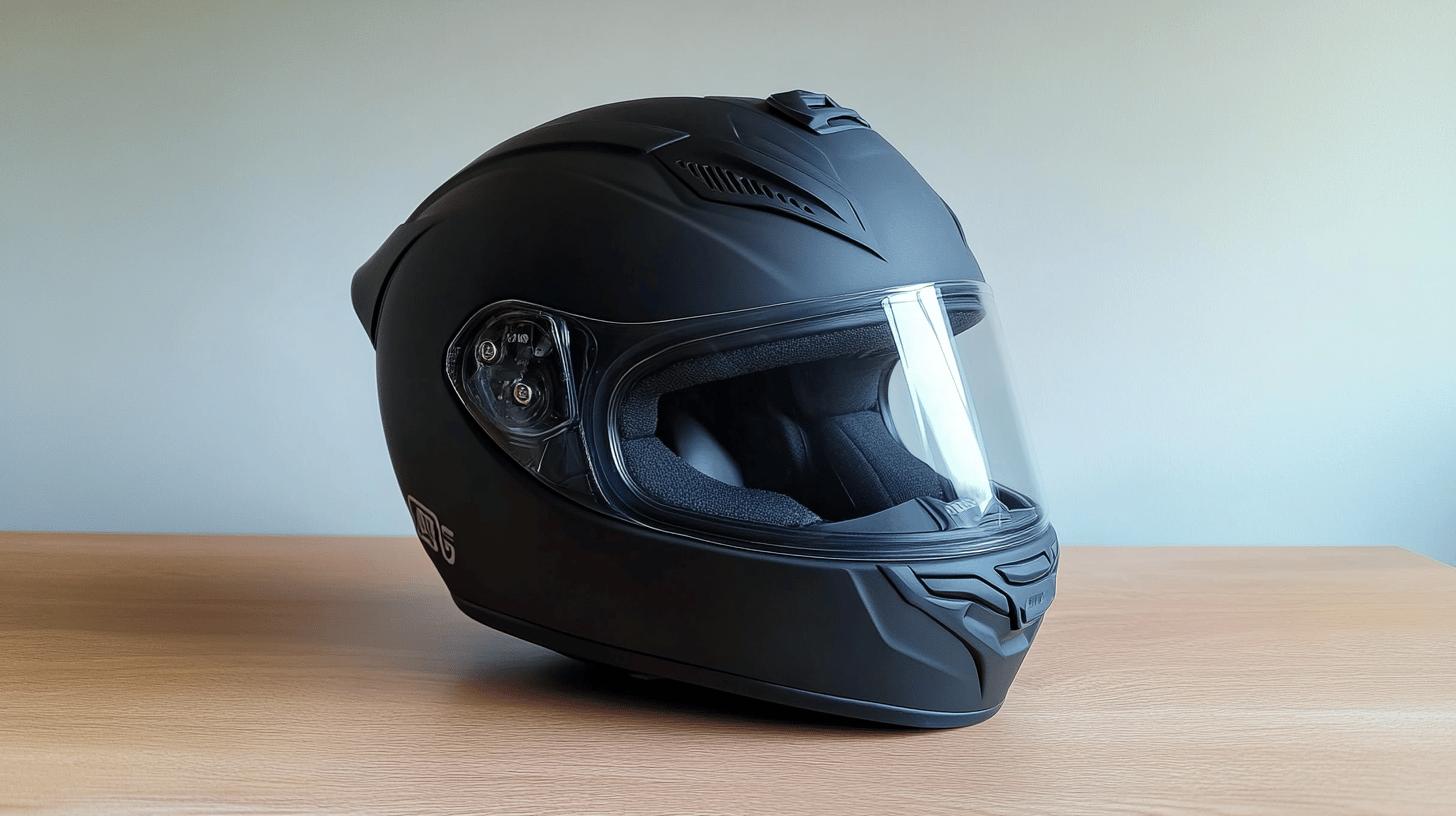Is your motorcycle helmet really protecting you—or just giving a false sense of security? With various safety ratings available, it’s crucial to understand which certifications provide the best protection on the road.
This article dives into the intricacies of helmet safety ratings—DOT, ECE, Snell, and SHARP—comparing their testing procedures and revealing their strengths and weaknesses.
Uncover the secrets behind each certification and discover which helmets hold up to the highest safety standards, ensuring your next ride is as safe as it is thrilling.
Understanding Motorcycle Helmet Safety Ratings

Motorcycle helmet safety ratings are crucial for evaluating the protection capabilities of helmets. These ratings are established through rigorous testing standards set by various organizations, each ensuring helmets meet specific safety criteria.
They are essential for riders to assess which helmets can best protect them in the event of an accident. Safety ratings like DOT, ECE, Snell, and SHARP are not just labels; they represent the effectiveness of a helmet's design in minimizing head injuries.
By understanding these ratings, riders can make informed decisions about which helmets provide the necessary level of safety for their riding conditions.
-
DOT (Department of Transportation): Helmets with this certification must comply with FMVSS No. 218 in the United States, which includes tests for impact attenuation, penetration resistance, and retention system effectiveness.
-
ECE (Economic Commission for Europe): Known as ECE 22 standards, these are widely recognized in Europe and involve testing for real-life environmental conditions, ensuring helmets can perform well in diverse scenarios.
-
Snell: This certification involves more comprehensive testing with stricter thresholds than DOT or ECE, including guided fall, oblique impact, and dynamic retention tests, offering enhanced impact protection.
- SHARP (Safety Helmet Assessment and Rating Program): A UK-based system that provides a star rating (out of five) based on real-world accident data, enhancing safety insights by evaluating helmets that have already passed ECE tests.
These motorcycle helmet safety ratings collectively contribute to rider safety by offering clear benchmarks for helmet manufacturers to achieve. They ensure that helmets undergo thorough testing for impact resistance and overall durability.
With these ratings, riders can select helmets that suit their specific needs, balancing protection, comfort, and compliance with regional safety standards.
Comparing Helmet Safety Certifications: DOT vs ECE vs Snell vs SHARP

When determining the best motorcycle helmet safety rating, it's essential to compare the major certification standards, as each has unique testing protocols and criteria. Understanding these differences enables riders to select helmets that best suit their safety needs and riding conditions.
| Certification | Key Features |
|---|---|
| DOT (Department of Transportation) | Minimum standard in the U.S., focusing on impact attenuation, penetration resistance, and retention system effectiveness. Self-certification by manufacturers. |
| ECE (Economic Commission for Europe) | Recognized internationally, involves testing under real-life environmental conditions. Comprehensive evaluation of helmet performance in diverse scenarios. |
| Snell | Known for rigorous testing, including guided fall, oblique impact, and dynamic retention. Often considered superior to DOT and ECE due to stricter thresholds and enhanced impact protection. |
| SHARP (Safety Helmet Assessment and Rating Program) | UK-based, provides a star rating out of five based on real-world accident data. Evaluates helmets with ECE certification, offering additional safety insights. |
The strengths of these certifications lie in their distinct approaches to helmet safety. The DOT standard is widely accepted in the U.S. but is the most basic, relying on manufacturers to self-certify.
In contrast, ECE is valued for its international applicability and real-world scenario testing. Snell certification is often regarded as the most rigorous, offering higher impact protection through extensive testing. SHARP adds another layer by assessing helmets' real-world performance, which can be critical for evaluating overall safety.
Each certification has its merits, and the choice depends on the rider's priorities, whether it's adherence to local regulations, international standards, or the highest level of tested protection.
Choosing Top-Rated Helmets: Brands and Models to Consider

When selecting a motorcycle helmet, prioritizing safety certifications is critical. Certifications like DOT, ECE, Snell, and SHARP provide assurance that a helmet has undergone rigorous testing for protection standards.
Helmets meeting these certifications are designed to withstand various impact scenarios, offering riders enhanced safety on the road. Ensuring that a helmet is certified means it has met specific criteria, tested for impact attenuation, penetration resistance, and retention system effectiveness.
This not only increases confidence in the product's safety but also aligns with regulatory compliance, ensuring that the helmet performs well in real-life situations.
-
AGV: Known for high-quality construction and superior safety features.
-
Bell: Offers a range of helmets with strong safety ratings and innovative designs.
-
Shoei: Praised for combining comfort, quality materials, and excellent safety standards.
-
Arai: Renowned for meticulous handcrafting and industry-leading safety measures.
-
HJC: Popular for affordability without compromising on safety features.
-
Scorpion: Recognized for incorporating advanced technology and robust safety elements.
-
LS2: Offers a balance between price and performance with solid safety credentials.
-
Schuberth: Known for premium helmets with advanced aerodynamics and safety.
-
Nolan: Focuses on innovative safety features and durability.
- Klim: Offers helmets with top-tier safety features and rugged design.
When considering a helmet, features such as high visibility and material quality are key. High-visibility helmets improve road safety by making riders more noticeable to other motorists, reducing accident risks. Helmets constructed from materials like carbon fiber, Kevlar, and polycarbonate offer varying levels of impact resistance and weight balance.
Carbon fiber, for instance, is lightweight yet exceptionally strong, providing excellent protection. Additionally, features such as adjustable ventilation and removable liners can enhance comfort and usability, making the helmet more practical for long rides.
Budget considerations are also vital when choosing a helmet. While premium helmets can cost up to $1,654.99, there are excellent options available under $500. Brands like HJC and LS2 offer helmets that balance affordability with safety and quality, ensuring that riders do not have to compromise on protection due to budget constraints.
Selecting a helmet within this price range can provide essential safety features and certifications, making it a worthy investment for any rider prioritizing safety and cost-efficiency.
Helmet Fit and Additional Safety Features

Proper fit and sizing are paramount in motorcycle helmet safety. A helmet that fits correctly provides the necessary protection during an accident by ensuring it doesn't dislodge upon impact.
The helmet should sit snugly on the head without causing discomfort, covering the top of the forehead and remaining stable when the rider moves. The chin strap plays a critical role, as a well-fastened strap prevents the helmet from slipping off during a crash.
This focus on fit is especially important in full-face helmets, which offer superior protection and dominate the market with a 60.1% share, safeguarding the entire head, including the face, jaw, and chin.
-
Full-face design
-
MIPS technology
-
High-visibility colors
- Adjustable ventilation
Despite the rigorous testing that helmets undergo, some criticisms persist about the testing methodologies. Critics argue that laboratory tests may not accurately replicate real-world conditions, potentially leading to a discrepancy in expected performance.
To make informed choices, riders should consider helmets that excel in both safety certifications and real-world testimonials from other riders. Exploring helmets that incorporate advanced safety technologies, like MIPS, which reduces the risk of Traumatic Brain Injury by addressing rotational forces, can further enhance safety.
Riders should also look for helmets with high-visibility colors and adjustable ventilation, which improve safety and comfort during rides.
Future Trends and Innovations in Helmet Safety Standards

What are the future trends in motorcycle helmet safety standards? The evolving nature of helmet safety standards is marked by the introduction of more rigorous testing procedures aimed at enhancing rider protection.
The ECE 22.06 standard, effective from 2023, incorporates comprehensive testing methodologies that address a broader spectrum of impact scenarios, ensuring that helmets offer superior protection in various environments. Meanwhile, the Snell M2025 standard, set to take effect on October 1, 2024, promises even stricter criteria, emphasizing the need for helmets to withstand more demanding impact tests.
These advancements reflect an ongoing commitment to improving helmet safety, driven by the recognition that more robust standards can significantly mitigate the risk of head injuries.
-
Enhanced impact testing
-
Greater focus on real-world conditions
-
Integration of smart technology
How will these trends affect rider safety and helmet choices? The anticipated innovations in helmet safety standards are poised to offer riders helmets that not only meet but exceed current safety expectations. Enhanced impact testing will likely lead to the development of helmets that provide improved protection against a wider range of impact forces.
A focus on real-world conditions ensures that the testing processes are more representative of actual riding scenarios, potentially increasing the effectiveness of helmets in preventing injuries.
Additionally, the integration of smart technology into helmet designs could offer features such as crash detection and communication capabilities, further enhancing rider safety. These trends are expected to influence riders' choices, encouraging the selection of helmets that prioritize advanced safety features and cutting-edge technology.
Final Words
Navigating through the labyrinth of motorcycle helmet safety ratings can be challenging, with options like DOT, ECE, Snell, and SHARP each offering unique advantages.
Comparing these certifications reveals differences in testing processes and standards, emphasizing the importance of informed choices. Opting for top-rated brands like AGV and Shoei, and focusing on proper fit and additional safety features, enhances protection.
As future trends evolve, staying informed on what is the best motorcycle helmet safety rating becomes crucial for safe riding.
FAQ
What is the best motorcycle helmet safety rating?
A: The best motorcycle helmet safety ratings include DOT, ECE, Snell, and SHARP. These standards evaluate helmets based on impact, retention, and real-world environmental conditions.
Is SNELL or MIPS better?
A: Snell certification is rigorous, while MIPS focuses on addressing rotational impacts, reducing brain injury risk. Choosing between them depends on the specific safety features preferred by the rider.
What is the best certification for a motorcycle helmet?
A: The best certification for a motorcycle helmet can depend on personal preference. Snell is highly rigorous, while ECE is internationally recognized with real-world scenario testing.
Is ECE better than DOT?
A: ECE is globally recognized and involves real-life testing scenarios. DOT is the minimum U.S standard with self-certification by manufacturers. Preference can depend on individual testing needs.
Which motorcycle helmet has the highest safety rating?
A: Helmets rated by SHARP with a five-star rating are considered the highest. SHARP offers performance evaluations based on real-world accident data, making it a comprehensive standard.
What are some of the best motorcycle helmet brands?
A: Leading helmet brands known for safety and quality include Shoei, Arai, AGV, Bell, and Schuberth. These brands often incorporate top safety certifications across their products.

Brad Mitchell is a seasoned motorcycle enthusiast with over 16 years of riding experience. He’s spent countless hours on the open road, particularly favoring scenic routes aboard his trusted Harley-Davidson. Brad’s laid-back approach to life and riding gives him a unique perspective on motorcycle gear and safety, which he shares through his in-depth reviews and expert advice on ProtectiveGearz.



